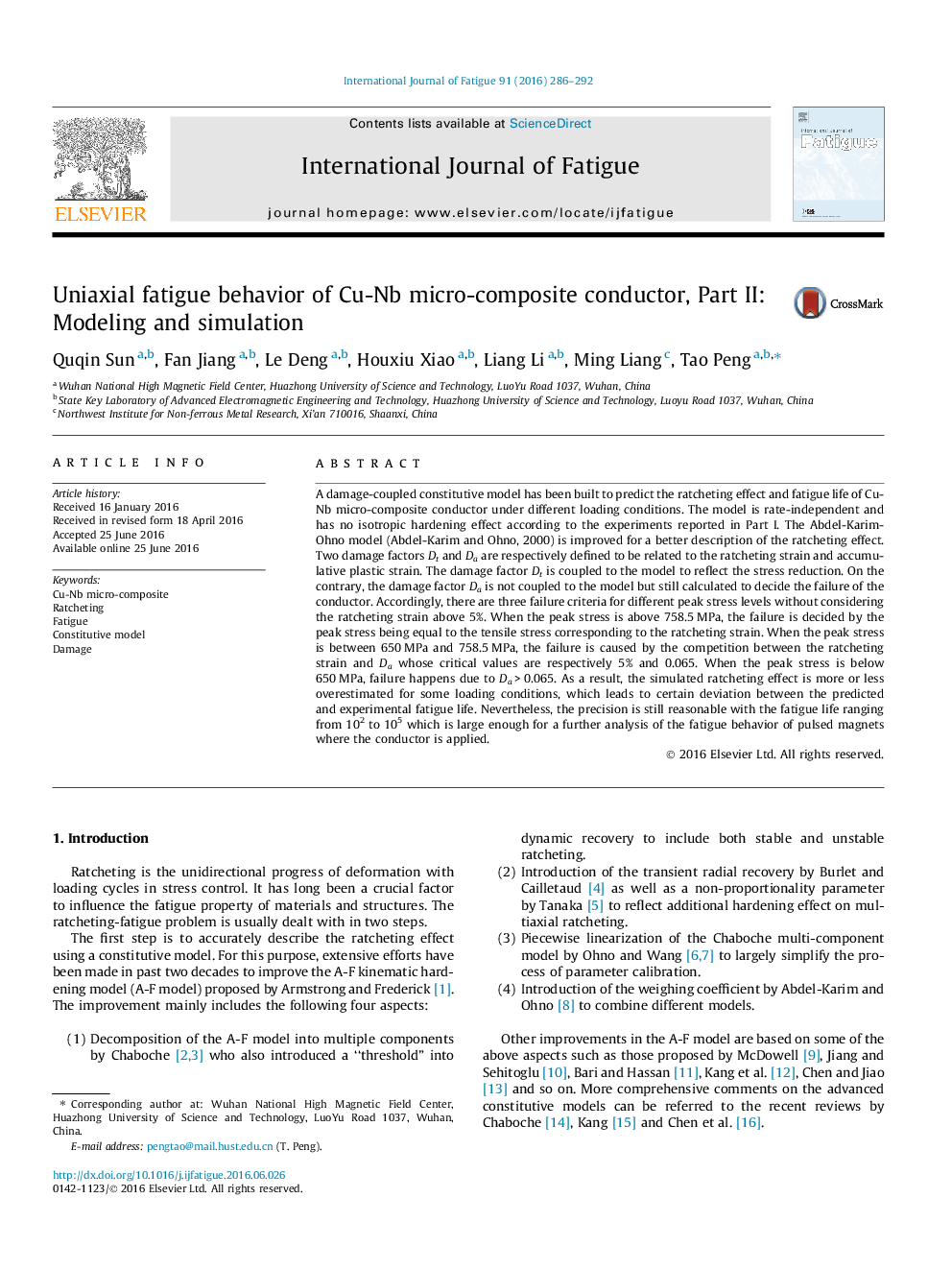| Article ID | Journal | Published Year | Pages | File Type |
|---|---|---|---|---|
| 7171766 | International Journal of Fatigue | 2016 | 7 Pages |
Abstract
A damage-coupled constitutive model has been built to predict the ratcheting effect and fatigue life of Cu-Nb micro-composite conductor under different loading conditions. The model is rate-independent and has no isotropic hardening effect according to the experiments reported in Part I. The Abdel-Karim-Ohno model (Abdel-Karim and Ohno, 2000) is improved for a better description of the ratcheting effect. Two damage factors Dt and Da are respectively defined to be related to the ratcheting strain and accumulative plastic strain. The damage factor Dt is coupled to the model to reflect the stress reduction. On the contrary, the damage factor Da is not coupled to the model but still calculated to decide the failure of the conductor. Accordingly, there are three failure criteria for different peak stress levels without considering the ratcheting strain above 5%. When the peak stress is above 758.5 MPa, the failure is decided by the peak stress being equal to the tensile stress corresponding to the ratcheting strain. When the peak stress is between 650 MPa and 758.5 MPa, the failure is caused by the competition between the ratcheting strain and Da whose critical values are respectively 5% and 0.065. When the peak stress is below 650 MPa, failure happens due to Da > 0.065. As a result, the simulated ratcheting effect is more or less overestimated for some loading conditions, which leads to certain deviation between the predicted and experimental fatigue life. Nevertheless, the precision is still reasonable with the fatigue life ranging from 102 to 105 which is large enough for a further analysis of the fatigue behavior of pulsed magnets where the conductor is applied.
Related Topics
Physical Sciences and Engineering
Engineering
Mechanical Engineering
Authors
Quqin Sun, Fan Jiang, Le Deng, Houxiu Xiao, Liang Li, Ming Liang, Tao Peng,
